Peloton Knee Pain – Why Does it Happen?
Author:
Unlock your full potential by engaging with our experts and community! Have questions about your fitness journey or looking for expert advice on weightlifting techniques? Don’t hesitate — leave a comment below and David Sasha Schulz will provide a personalized answer and insights to help you reach your goals.
Torokhtiy is reader-supported. Some links are affiliate links, and we may earn a commission at no extra cost to you. See our disclosure page for details.
If you are struggling with knee pain after riding your Peloton Bike, keep reading. We’ve explained why Peloton knee pain (knee pain, caused by using a Peloton bike) might happen, how to set up your bike correctly, and what are possible knee pain treatment options. We also provide some alternative knee-friendly workouts and answered some FAQs.
The Peloton bike is a popular at-home cycling system, combining a magnetic resistance system with an interactive studio experience using the large HD screen at the front. One of the most common complaints among riders is Peloton knee pain. So, what should you do if you experience knee pain? Why is it happening, and how do you prevent it from happening again?
To help keep you pain-free, I’ve answered all these questions in detail below. First, let’s look at the possible contributing factors.
Peloton knee pain, is commonly caused by poor bike setup, incorrect footwear, and too much training. All of these factors may be contributing in different amounts. The right solution depends on the type of knee pain you’re experiencing, with minor adjustments often making a big difference.
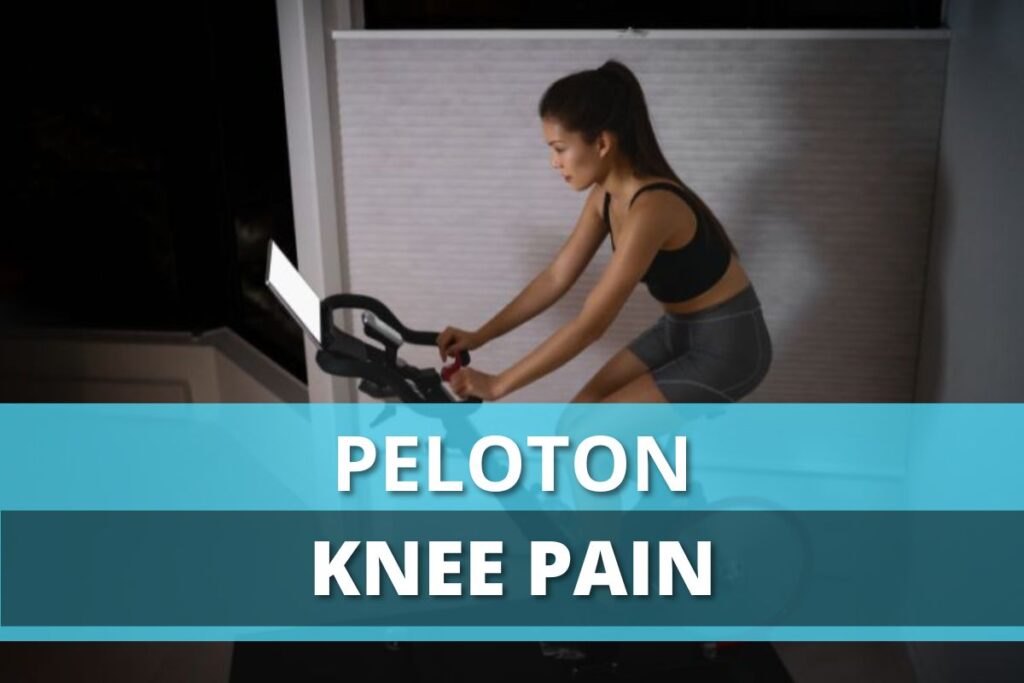
Understanding Knee Pain from the Peloton Bike
Knee pain can be caused by multiple different problems. Inflammation, sprain, strains and tears are some of the main reason why you could have knee pain. Knowing the main cause of the pain and knee structure being affected significantly improves the prognosis, guides the treatment and helps prevent further injuries.
5 Causes of why your knees hurt after Peloton riding:
❌ Low Bike Saddle/ Incorrect Cool Down
A saddle that’s set too low can place too much stress on your quadriceps tendon, which connects the quads to the kneecap. This positioning forces your knee into a deeper bend during each pedal stroke, which can lead to tightness, inflammation, or swelling around the patella.
Skipping cool-down can also be an issue because without it, the muscles and tendons around the knee don’t receive the necessary recovery support.
❌ Excessive Knee Flexion
Pain in the patella (knee cap) can be due to excessive knee flexion when riding, which increases compressive forces between the knee cap and the femur (thigh bone). This heightened pressure on the joint can lead to discomfort or pain around the patella.
❌ High Bike Saddle
The larger of the two bone that goes between your knee and ankle is known as your Tibia. It supports the weight of your body and plays a big role in movement and stability. If you feel pain in your tibia when cycling, your saddle is too high.
When the saddle is too high, your legs may fully straighten or even hyperextend at the bottom of the pedal stroke, which can place too much strain on the muscles and tendons around the knee and shin, including the muscles along the tibia.
This repetitive overextension can lead to discomfort or pain in the tibia due to improper load distribution and increased stress on the lower leg. High saddle placement may also lead to pain in your Iliotibial (IT) band and tightness in your hamstrings. Both of these work together to bend your knees as you ride.
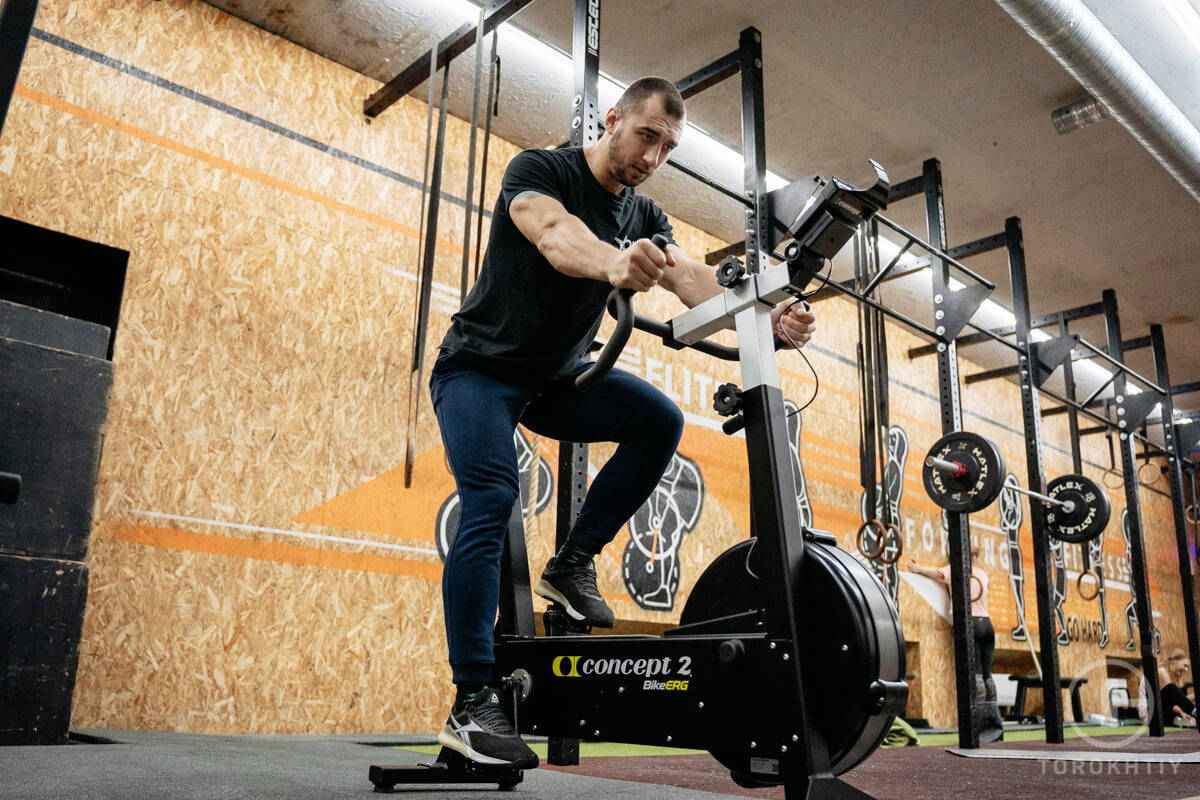
❌ Excessive Calf Activation
You may experience knee and calf pain together during or after riding the Peloton. Whilst the saddle being too high is a contributing factor, you’re likely putting too much strain on your calf muscle to push and pull your leg around.
When it comes to cycling, both the upper and lower body needs to work in sync to function correctly. If one muscle works harder, it’s more likely to get injured.
❌ Incorrect Cleat Positioning
Pedal cleats are the bits that attach to the bottom of your cycling shoes, keeping you in place when riding. If the cleats are positioned too far away, your knees may be too far from the bike. This can cause pain on the inner side of your knee.
Conversely, if the cleats are too close, you may experience lateral knee pain which is pain on the outer side of the knee.
Bike Setup for Knee Health
Now you know why your knees hurt on Peloton bikes, but how do you set your bike up correctly?
1. Saddle Adjustments
Making small saddle adjustments can transform your knee pain and performance. The right adjustment depends on the type of pain. For anterior knee pain, increase the saddle height to take some pressure off the front of the leg. The higher saddle stops the knee from becoming as compressed when bending, therefore reducing the incidence of pain.
Moving the saddle backward may also help to further reduce knee compression and therefore anterior knee pain. For posterior knee pain, try lowering the saddle height to take some pressure off your hamstrings and calves. Moving the saddle forwards will also help shift some of the bike work more toward the front portion which may also be useful.
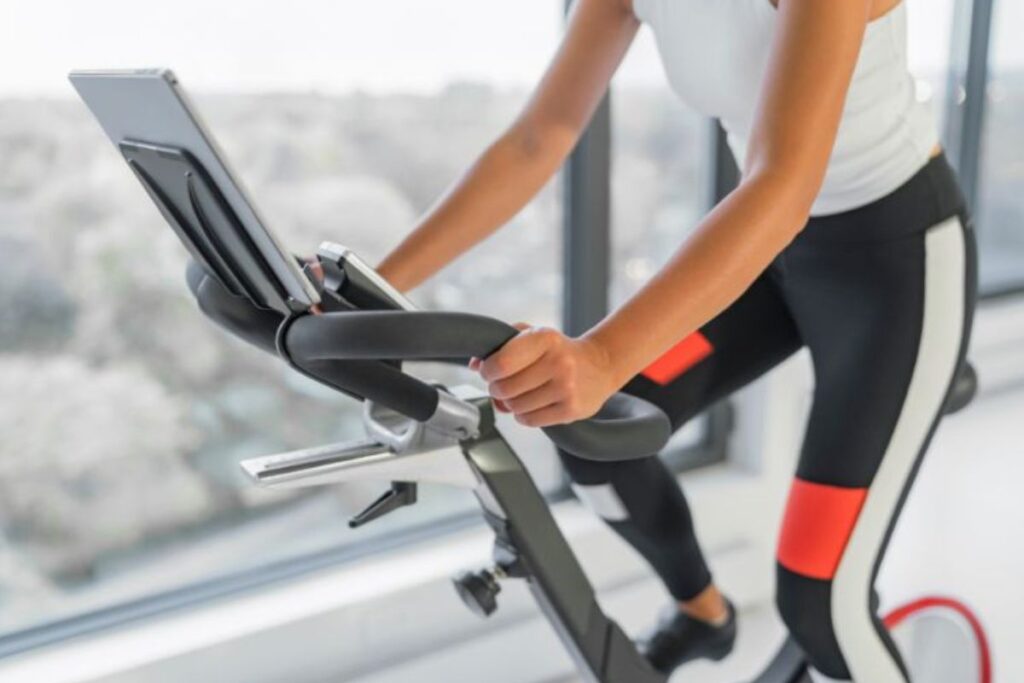
2. Cleat Adjustments
Correctly positioning the cleats before riding can help to reduce the incidence of knee pain on the Peloton. If you’re experiencing medial knee pain, you must reduce the space between your feet. Try moving the cleats inwards a little until you feel more comfortable. Lateral knee pain requires you to move the cleats outwards, increasing the space between your feet.
Before riding, make sure the cleats are properly aligned. Are they at an angle or off-center? Even the slightest deviation can cause your biomechanics to change and lead to unwanted pain.
Modifications and Alternatives for Knee-friendly Workouts
Knee pain doesn’t mean you need to stop exercising all together. Changing your workout routine (like reducing total miles, lowering the intensity of your rides, or adjusting your resistance levels) or trying a different exercise mode whilst you address the issue are both good options.
1. Knee-friendly workouts
If you want to keep using the Peloton, here are some knee-friendly workouts to try. Peloton offers a great range of instructor-led workouts.
- Low-impact Ride: A low-impact ride allows you to start slow and build up according to how your body is feeling. On the Peloton library, go to the ‘Lo Impact’ section.
- HIIT Workout: A high-intensity interval training workout is a great way to maximize your productivity on the bike. The interval rest sessions provide time for recovery so you don’t overload your knee joint. Make sure to tailor the intensity according to your knee pain. Check the ‘HIIT’ section on Peloton
2. Exercise Modes
Switching the exercise while you address the knee issue may provide short-term relief. If excessive knee flexion and compression are the problems, try using a cross trainer, stepper, or treadmill at a lower intensity.
Swimming, rowing, echo bike, hicking, running and jumping rope are all excellent alternatives to challenge your cardiovascular system, and maintain your joint health. These other cardiovascular alternates can be fun and effective.
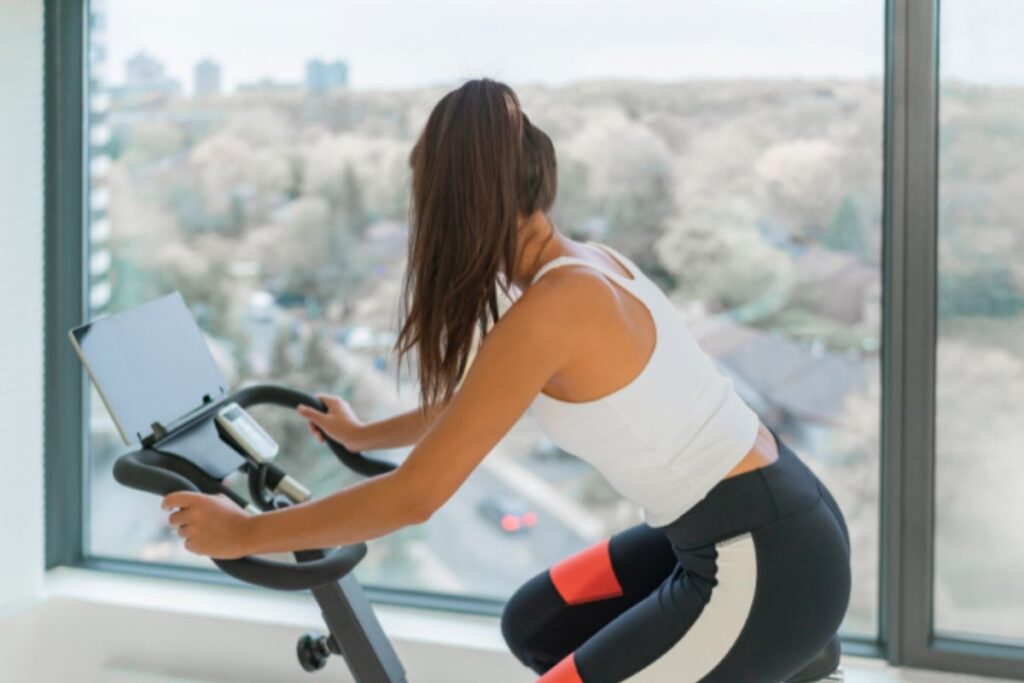
3 Treatment Options for Knee Pain from the Peloton Bike
1. Managing Knee Pain and Preventing Overuse During Recovery
These three key concepts are crucial if you are having knee pain after a Peloton Bike workout. They help manage the symptoms and prevent over use of the knee when injured. Depending on how bad the pain is, consider taking a week off to rest.
During this time find other ways to maintain your active lifestyle without aggravating your knee. You can always try to modify your training by changing or reducing your intensity, duration, or frequency of the riding sessions.
2. Physical Therapy
Physical therapy can be a great tool to improve your symptoms, improve range of motion, strength and resolve any other limitation affecting your training. Exercises may include hip and knee stretches and strengthening.
A physical therapist can also provide you with modalities and manual techniques (stretching, soft tissue release or mobilization techniques) to improve any symptoms you may have. Even without knee pain, physical therapy should be part of your routine to prevent future injuries..
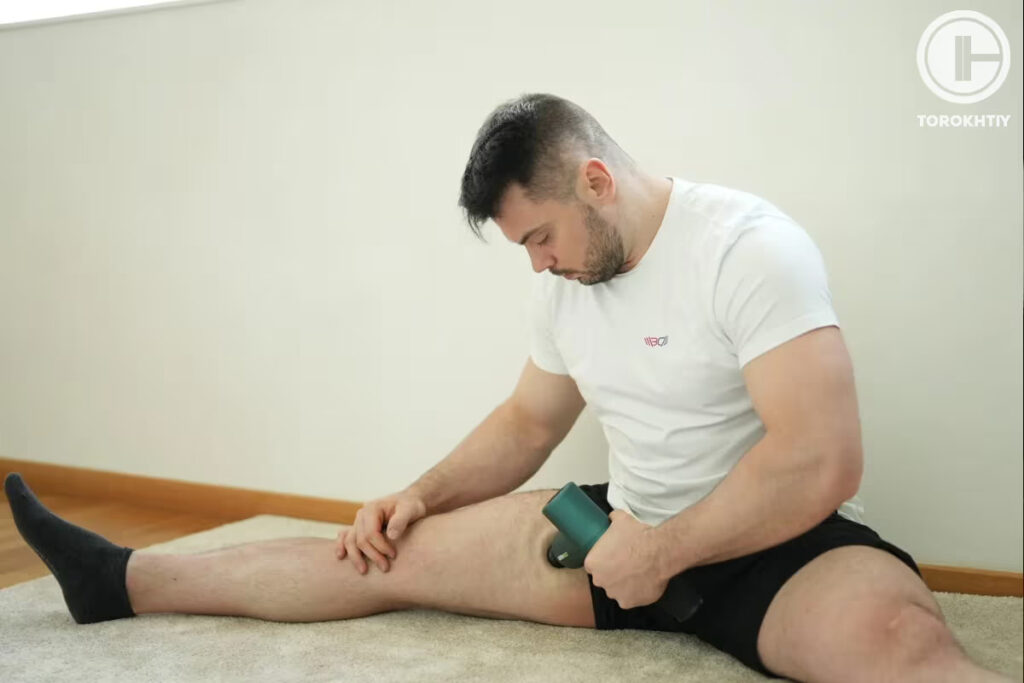
3. Professional Bike Fit
If you’ve tried my bike suggestions above but you’re still experiencing knee pain, getting a professional bike fit may be the way to go. Peloton offers an excellent professional fit service by one of its high-quality trainers.
Original Peloton Indoor Stationary Exercise Bike
- Dimensions: 51” L/ 24” W/ 51.25” H
- Adjustable Height: Min 4’11” / Max 6’5”
- Display: 22″ HD Touchscreen Display
- App: Peloton Bike & Peloton App
- Bluetooth: Bluetooth 4.0
- Resistance Mechanism: magnetic
- Product Weight: 135 lb
- Assembly: Required
- Maximum Weight Capacity / Max rider weight: 297 lb
- Best Uses For: intense cycling workout
- Special Feature: 100 resistance levels, built-in microphone, and 5 megapixels front camera, compatible with AppleWatch
- Warranty: 1-year
- Third-party Connectivity: not included
- Package: bike, instructions, touchscreen, toolkit
The Original Peloton Indoor exercise bike still reigns supreme, despite many cardio machine manufacturers trying to imitate its design and success.
Everything you need to use your Peloton to its fullest potential is found on the 22-inch sized touchscreen.
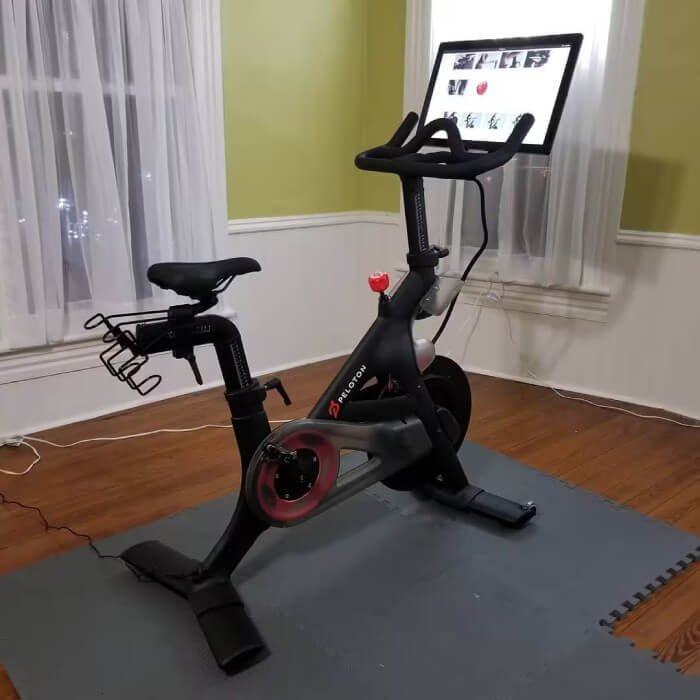
It features Bluetooth connectivity, a 5-megapixel front-facing camera, a built-in microphone, a headphone jack, and a USB port. With these tools, you can enjoy high-resolution fitness classes, or share the ride with your workout friends and join growing communities.
At just 4 x 2 footprint, it’s smaller compared to other exercise bikes, so it won’t take up too much space in your home or garage. Note that the built-in fitness app requires a monthly subscription.
FAQ
Why do my knees hurt when riding a Peloton bike?
Multiple factors may contribute to knee pain when riding the Peloton. These include bad saddle placement, incorrect footwear, biomechanical issues, and a poor workout routine.
All of these factors can be easily addressed by using the guidance I’ve provided above. Look at performing the correct warm-up and flexibility stretches, adjust your saddle correctly, and wear appropriate footwear.
How common are Peloton knee injuries?
A “Peloton knee injury” is much more common than you realize. Common knee injuries include knee pain, shoulder pain, hip issues, glute pain, and foot injuries.
Using the Peloton involves putting the knee joint under repetitive stress due to the repeated knee extension and flexion when riding. The knee joint needs to be taken care of if you start to feel any pain at all.
Conclusion
Peloton knee pain is a common issue experienced by riders that can lead to bigger injuries, decreases in performance, and time off training. The location of the pain can help identify the possible cause, with contributing factors including incorrect bike setup, using the wrong footwear, and biomechanical issues.
Solving knee pain may be much easier than you realize, with small changes in the saddle and cleat placement providing immediate pain relief. Alongside this, performing a good warm-up and investing in bike shoes may also help to get you cycling again.
Have you experienced Peloton knee pain before? Have you tried any of the solutions I’ve suggested above? Tell me about your experience in the comments section!
Also read:
- Knee Pain When Squatting
- Knee Pain From Lunges
- Knee Pain After Working Out
- Knee Pain After Jumping Rope
- Are Treadmills Bad for Your Knees
- Knee Pain From Elliptical
References:
- The Anatomy of the Patella // Verywellhealth: https://www.verywellhealth.com/ patella-anatomy-function-and-treatment-4768658
- Femoral Fractures // Physiopedia: https://www.physio-pedia.com/Femoral_Fractures
- Tibia // Britannica: https://www.britannica.com /science/tibia
- Iliotibial Band (IT Band) Syndrome // HSS: https://www.hss.edu/ condition-list_iliotibial-band-syndrome.asp
- Hamstring Muscles: Anatomy, Injuries, and Exercises // Verywellfit: https://www.verywellfit.com/ hamstring-muscle-anatomy-and-stretches-3498372
- 7 Knee-Strengthening Exercises That Prevent Pesky Knee Pain // Bicycling: https://www.bicycling.com/training /a26990890/ knee-strengthening-exercises/
- Booking a Bike or Bike+ Fitting // Onepeloton: https://support.onepeloton.com/hc/ en-au/articles/ 4402358678548-Bike-Fit-Appointment
- Photos by Torokhtiy Media Team; Maridav, Canva.com.
Why Trust Us?
With over 20 years in Olympic weightlifting, strength training, nutrition coaching, and general fitness our team does its best to provide the audience with ultimate support and meet the needs and requirements of advanced athletes and professional lifters, as well as people who strive to open new opportunities and develop their physical capabilities with us.
By trusting the recommendations of our certified experts in coaching, nutrition, and sports training programming, as well as scientific consultants, and physiotherapists, we provide you with thorough, well-considered, and scientifically proven content. All the information given in the articles concerning workout programming, separate exercises, and athletic performance, in general, is based on verified data.
The product testing process is described in more detail here.
Author: David Sasha Schulz
Doctor of Chiropractic, BSc Human Biology, CSCS
Strength coach (CSCS) – 10 years
Sasha is a Chiropractor and Kinesiologist practicing in Kelowna, BC, Canada. He has been practicing Chiropractic since 2019, integrating manual therapy, strength training and programming principles, and nutritional strategies to get his patients optimal results. He currently scratches the competitive itch in fitness, and the occasional endurance race, and plays golf and snowboards for fun. He has an interest in all strength and fitness-related sports.



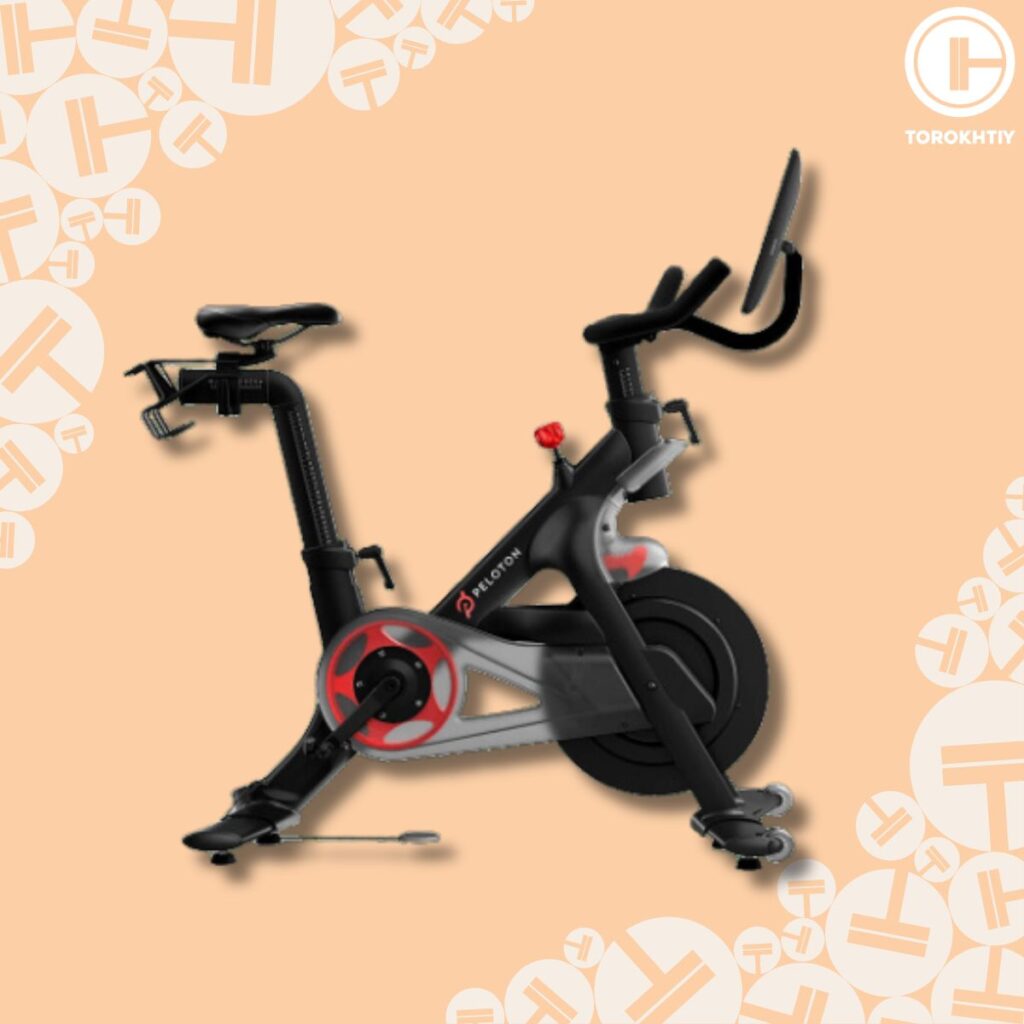
Still have questions after reading our article? Unlock your full potential by engaging with our experts and community! Don’t hesitate — leave a comment below and David Sasha Schulz will provide a personalized answer and insights to help you reach your goals.